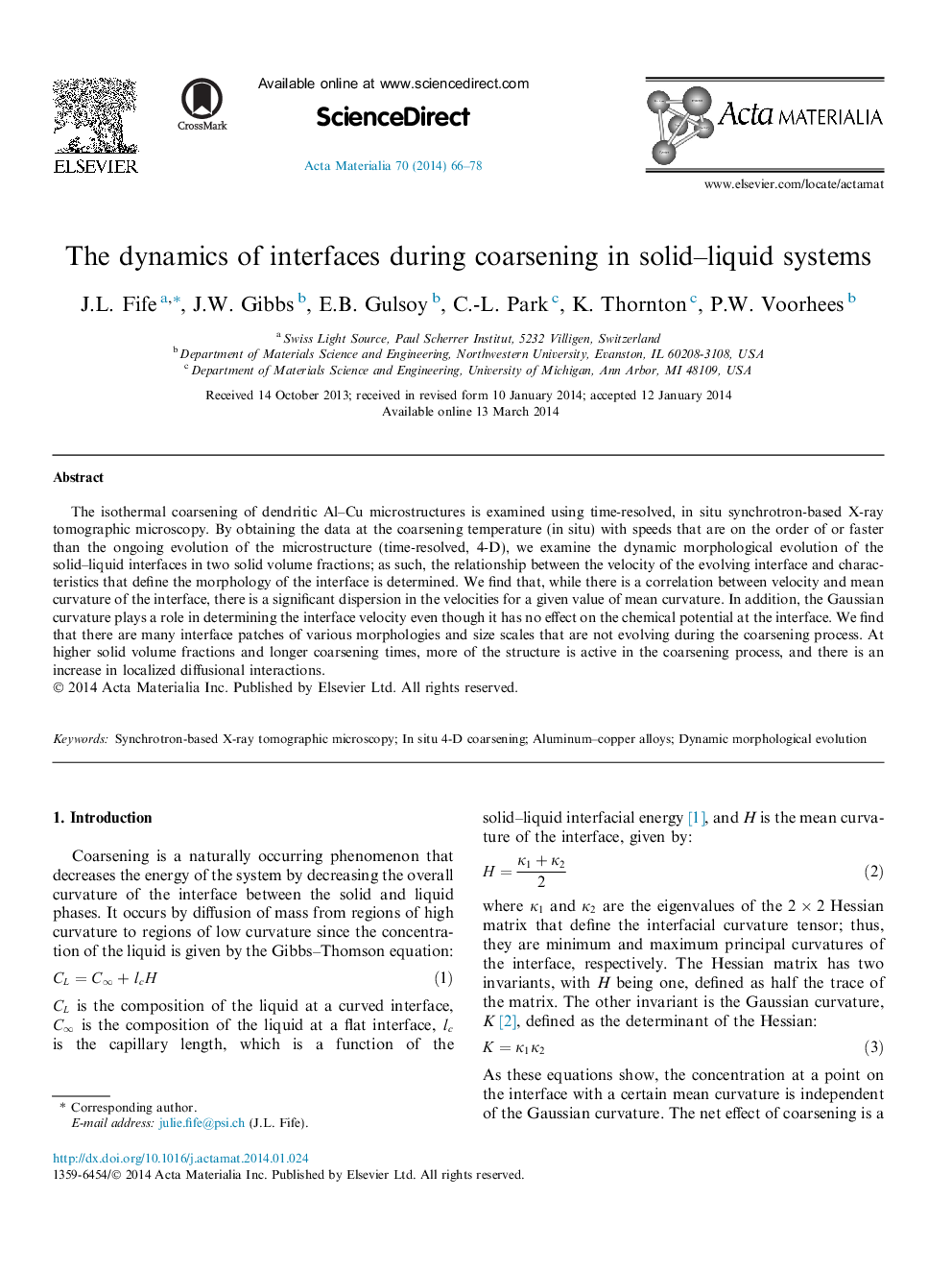| Article ID | Journal | Published Year | Pages | File Type |
|---|---|---|---|---|
| 7882017 | Acta Materialia | 2014 | 13 Pages |
Abstract
The isothermal coarsening of dendritic Al-Cu microstructures is examined using time-resolved, in situ synchrotron-based X-ray tomographic microscopy. By obtaining the data at the coarsening temperature (in situ) with speeds that are on the order of or faster than the ongoing evolution of the microstructure (time-resolved, 4-D), we examine the dynamic morphological evolution of the solid-liquid interfaces in two solid volume fractions; as such, the relationship between the velocity of the evolving interface and characteristics that define the morphology of the interface is determined. We find that, while there is a correlation between velocity and mean curvature of the interface, there is a significant dispersion in the velocities for a given value of mean curvature. In addition, the Gaussian curvature plays a role in determining the interface velocity even though it has no effect on the chemical potential at the interface. We find that there are many interface patches of various morphologies and size scales that are not evolving during the coarsening process. At higher solid volume fractions and longer coarsening times, more of the structure is active in the coarsening process, and there is an increase in localized diffusional interactions.
Related Topics
Physical Sciences and Engineering
Materials Science
Ceramics and Composites
Authors
J.L. Fife, J.W. Gibbs, E.B. Gulsoy, C.-L. Park, K. Thornton, P.W. Voorhees,
